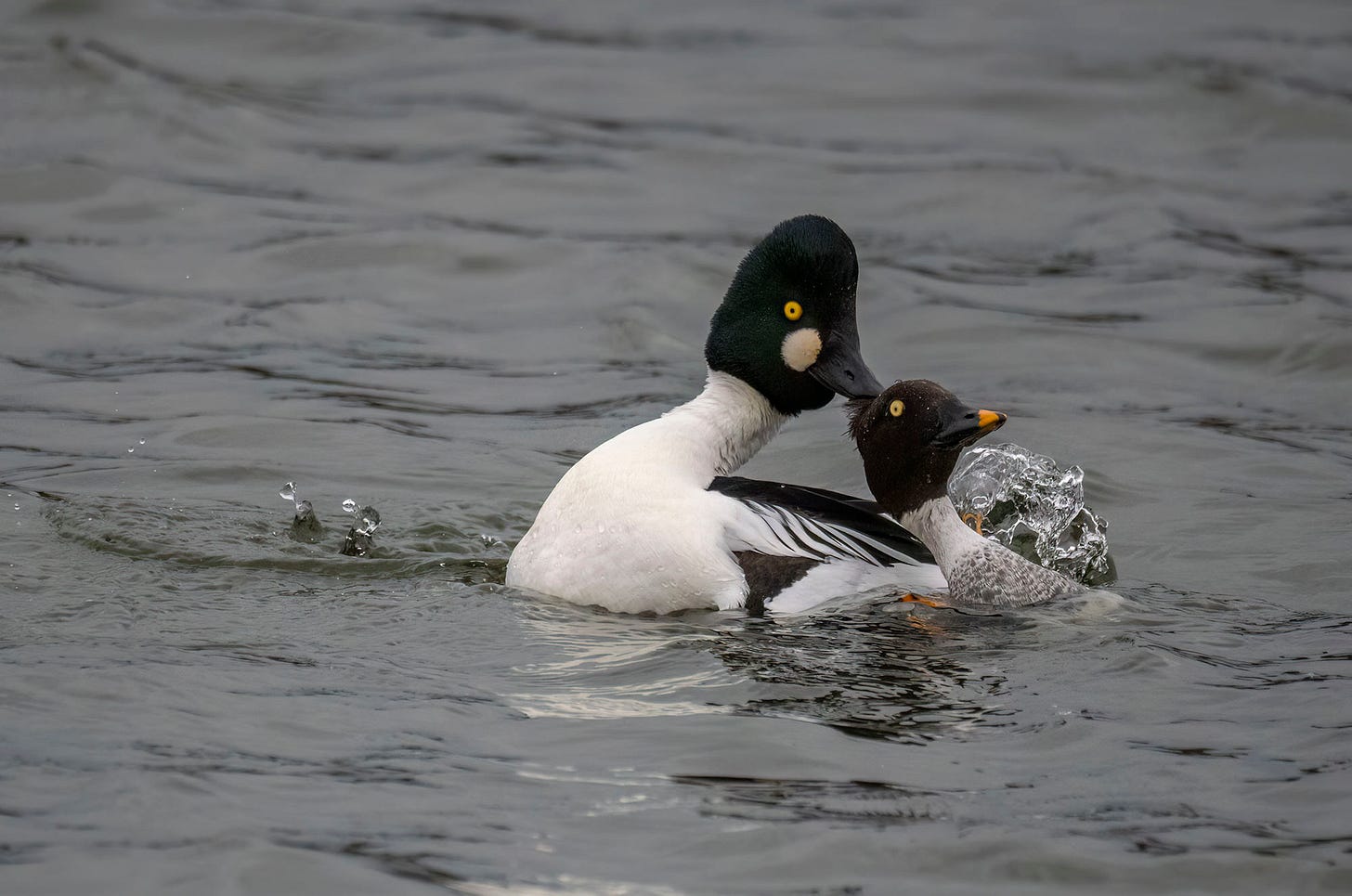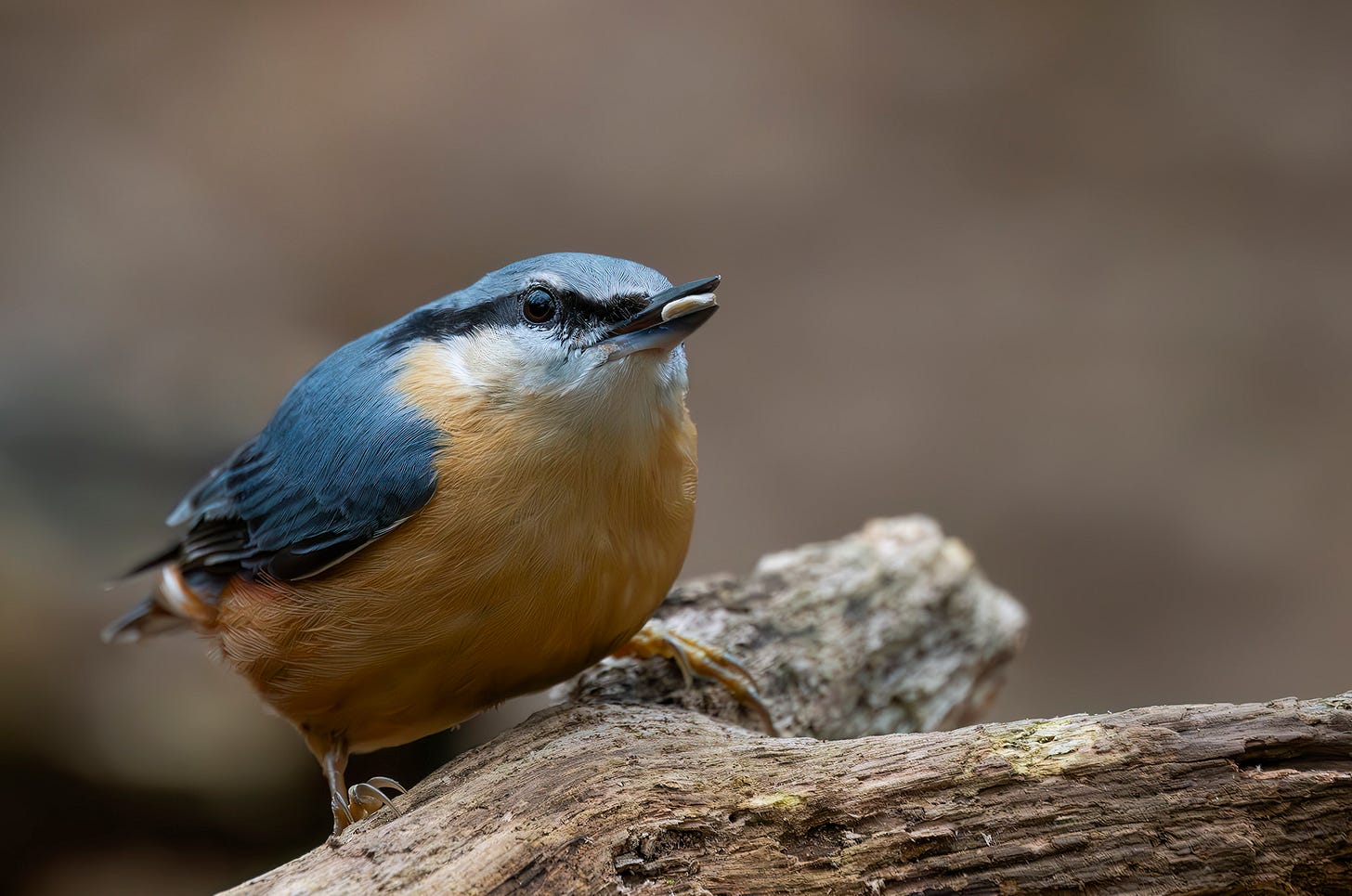February 2025 Viewfinder
It's not just the weather that's warming up in this month's Opposite View Wildlife Photography newsletter.
I know I'm usually the one explaining why I love winter - particularly in relation to wildlife photography - but this month has tried even my patience.
There have been a lot of dark days, and I completely sympathise with anyone who lives with Seasonal Affective Disorder. I've seriously struggled during the weeks where it seems like it's been dusk all day.
But, as American writer Hal Borland so eloquently pointed out, "No winter lasts forever; no spring skips its turn". And while there may have been a lack of light for much of this month, the behaviour of the local wildlife has been a constant reminder that the seasons are changing. Though we straddle the seasons, and the weather may contradict what the calendar tells us - with wintry cold snaps - nature continues regardless. This is a great time to get out with your camera to capture the first signs of spring. For me, that has involved seeking out the courtship rituals of our water birds.
I've wanted to witness the elaborate dance of great crested grebes for a long time but didn't live near a location where this natural spectacle could be seen. I now live close to places where these graceful birds can be spotted, and last spring I witnessed the parents feeding their chicks, but I managed to completely miss the build-up to mating. So, earlier this month, we headed to Hogganfield Loch to look for the great crested grebes.
While I stood at the water's edge and scoured the busy loch for a sign of Strictly Grebe Dancing amongst the large numbers of gulls, swans, dabbling and diving ducks, a pair of goldeneyes appeared nearby.
"They're going to mate," a chap said, placing his tripod next to me.
"How can you tell?" While the female did seem to be flirting with the drake with her head down in a submissive posture, I had no idea whether any 'action' was imminent.
The kind gentleman explained that we should watch out for the male stretching one wing and leg out behind him when the female was in that position. This was the indicator that they were about to mate. He wasn't wrong. A few moments after the drake had done his best stretching moves, he rushed over to the female, creating his own bow wave, and grabbed her behind the head. While much of the mating took place with the birds' backs to us, they did spin around briefly, and we both had the opportunity to capture some images of them in the act.
I shook my new friend's hand. Without his advice, we would have walked away to find the grebes and missed the birds mating by a few minutes. I also now know what to look out for when the goldeneye mating season warms up on our local lochs. It's a shame that they will raise their gorgeous fluff-ball chicks elsewhere, but it is a joy to watch their courtship. It was also a good reminder that doing your research into species' behaviours results in better images.
Tomorrow we'll enter meteorological springtime, and it looks like the weather forecast for the weekend, in Glasgow at least, will reflect the change of season. Much like the behaviour of the local wildlife, things are warming up.
Oh, and did we see the dance of the great crested grebes on our trip to Hogganfield Loch? Well, maybe not the full-on weed-waving spectacle, but there was plenty of synchronised preening and fanning of their feathers. I'll share some footage and images of that another time. For now, I'll leave you with one of the images from the gyrating goldeneye couple.
Best wishes,
Rhiannon
Opposite View Wildlife Photography
Through my lens
The lunch break wildlife photographer - top tips for time-limited nature photography
A lot can be achieved during an hour of your working day. You could have a productive meeting with a client, restock the shelves of your shop, or fix a broken boiler. But can you capture highly commended wildlife images during your lunch hour? The answer is most definitely yes.
In this blog, I share advice for budding wildlife photographers who struggle to find time for their passion. These tips come from years of lunch break photography, and all accompanying images were captured either during a weekday lunch hour or on short weekend walks.
Species spotlight
Nuthatch - the head-first hacker
The nuthatch has a name as sharp as its dagger-like beak. It comes from the Middle English word 'nuthak', meaning nut hacker – a reference to how it wedges nuts into cracks before 'hacking' them open with its beak to reach the soft seed inside. This highwayman of the woods (complete with a distinctive black bandit eye-stripe) fills its small territory with as much attitude as its name suggests.
In this blog, I explain why the nuthatch is a bit of a headbanger and share some of my images and footage of this distinctive woodland bird.
And finally…
I couldn't resist sharing another video from our January of urban otter encounters.
This family live on the River Clyde in Glasgow next to a well-used cycle path with industrial buildings and a noisy road nearby.
This footage was captured a couple of days after Storm Eowyn hit Scotland. The water level along this stretch of the river was significantly higher than when we'd seen this otter family a couple of weeks earlier. They were more active this time, and it seemed that the female was trying to acclimatise her cubs to the changes in their environment - encouraging them into the water and then back onto the bank.
There are more videos of wildlife encounters available to view on my YouTube channel including dolphins, waxwings, deer, seabirds, and all of my wildlife photography top tips videos.
Please subscribe to my channel to keep up to date.
Keep in touch
Thanks for reading this! If you have any comments or questions, opportunities for photography or if you would like to use any of my images, please leave a comment. I’d love to hear from you.
You can also follow me on:






